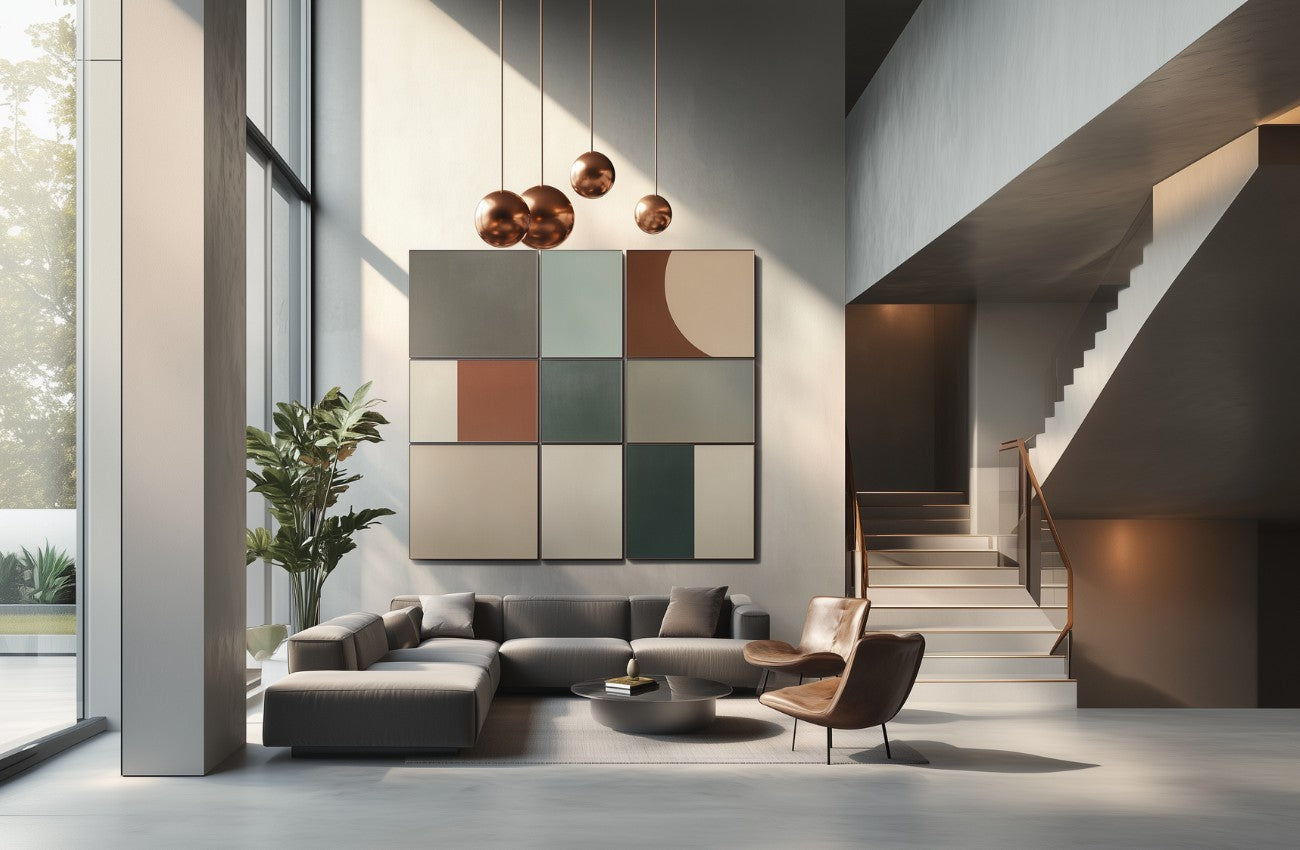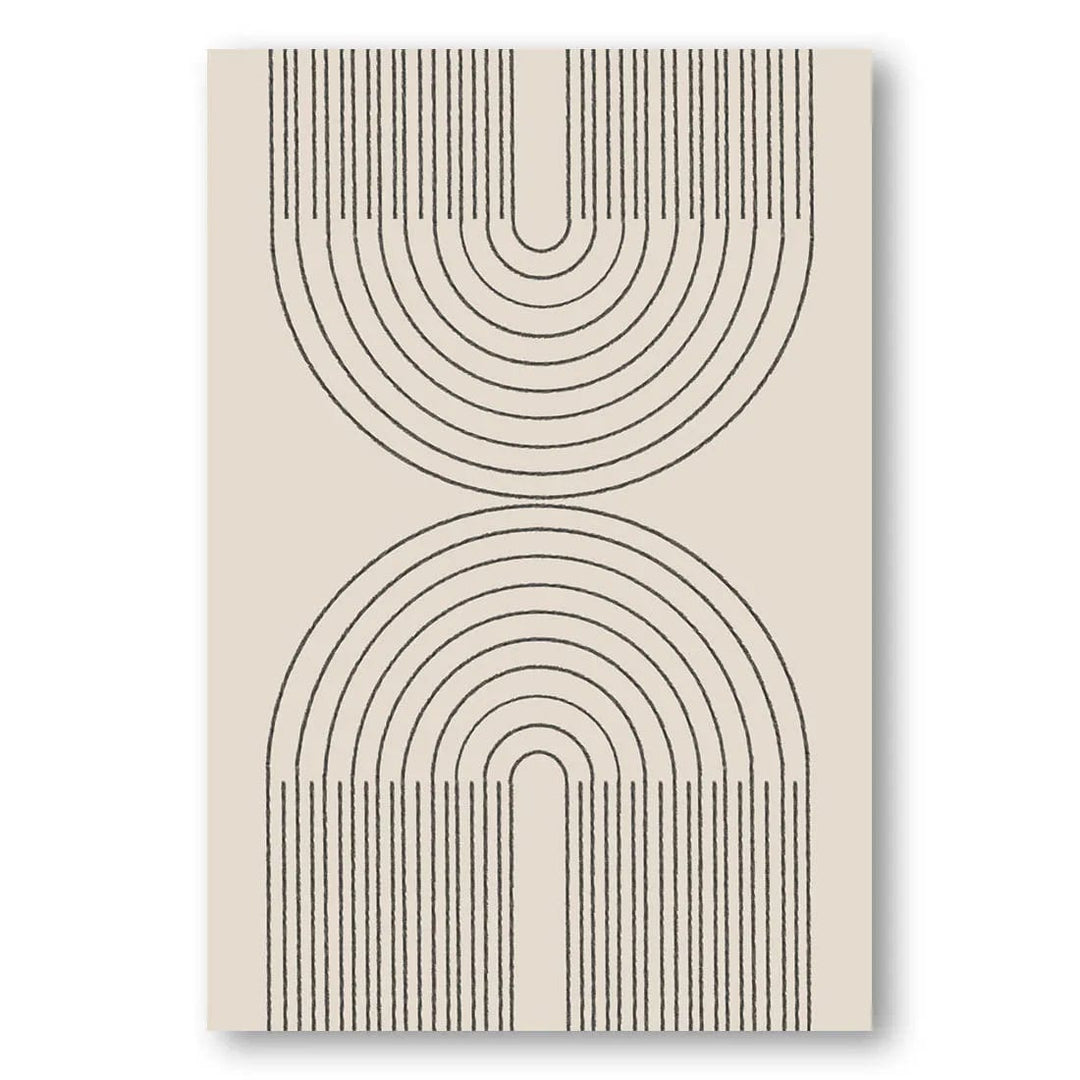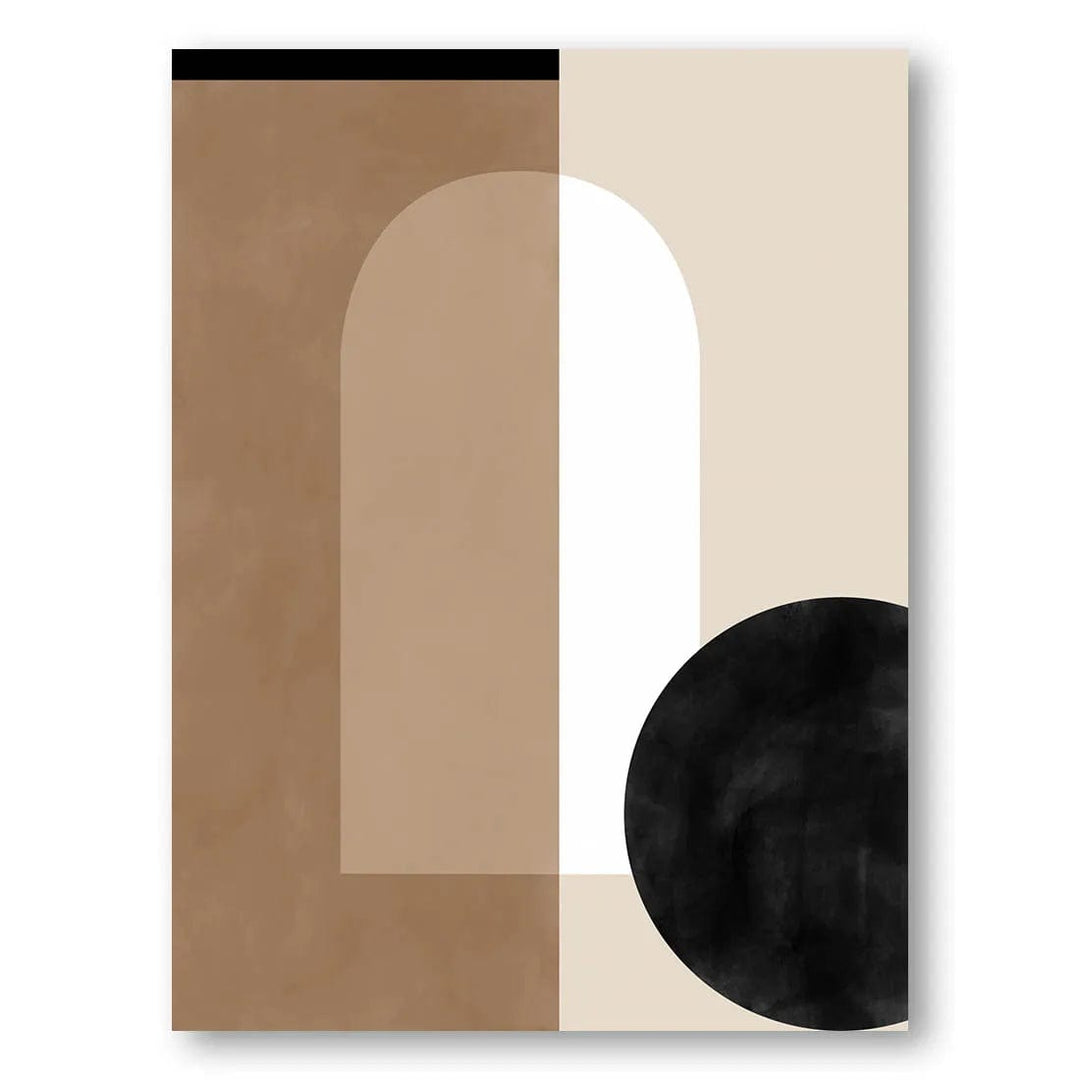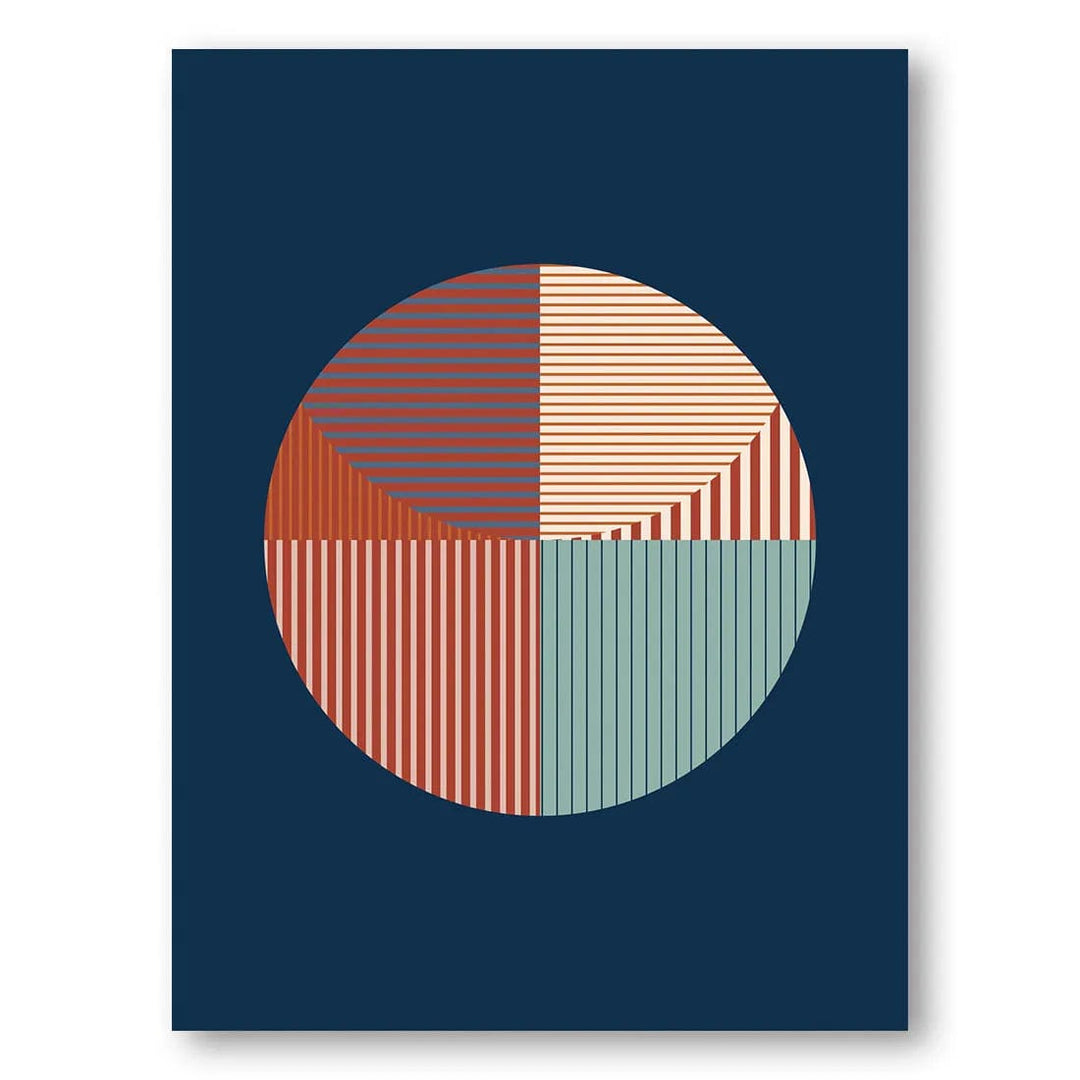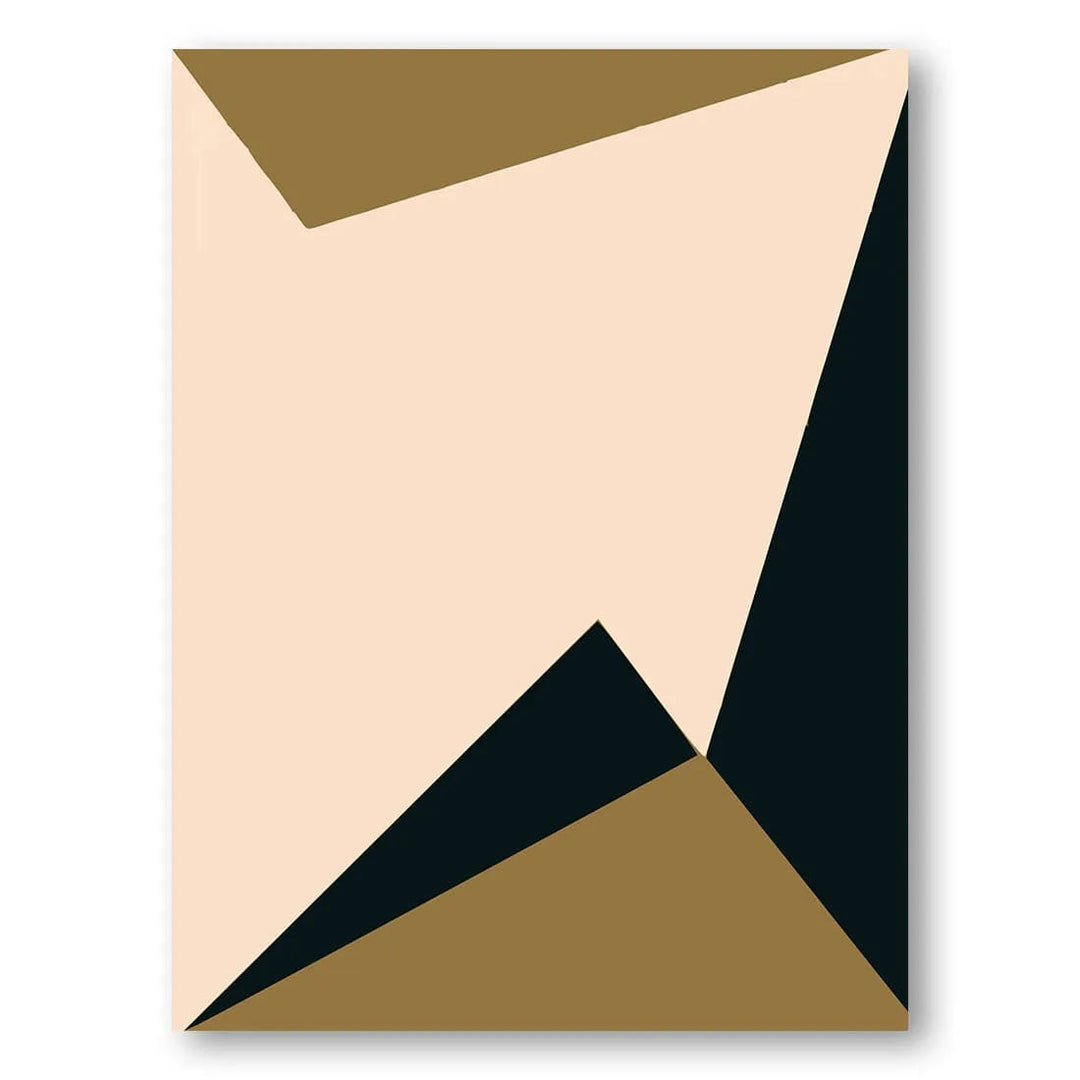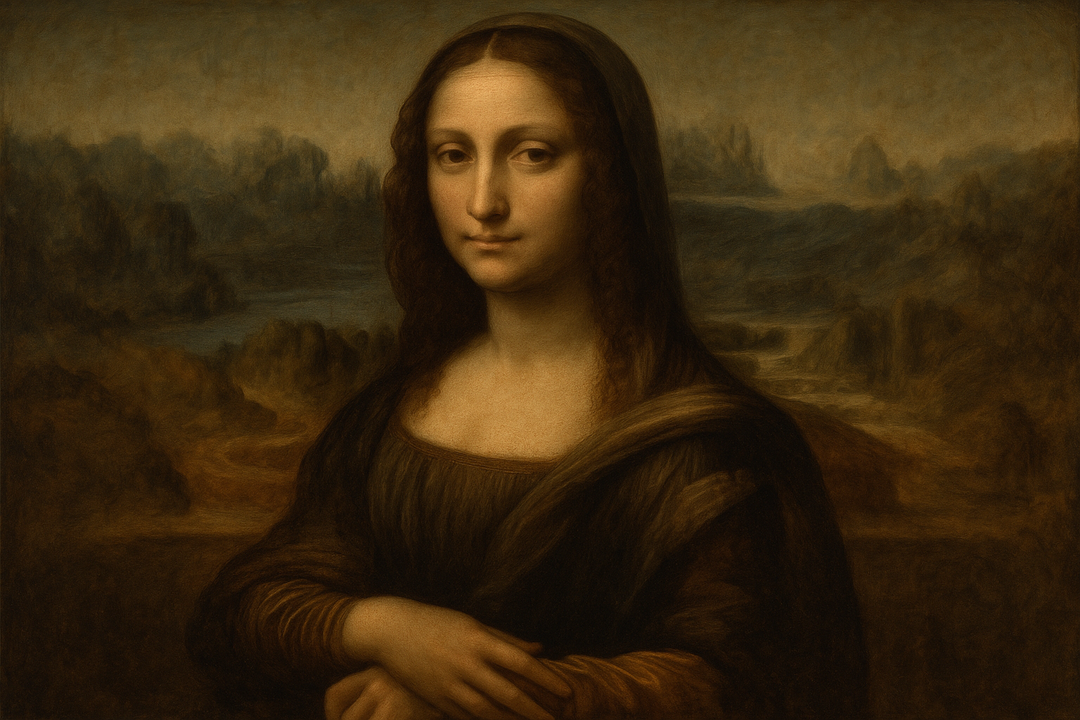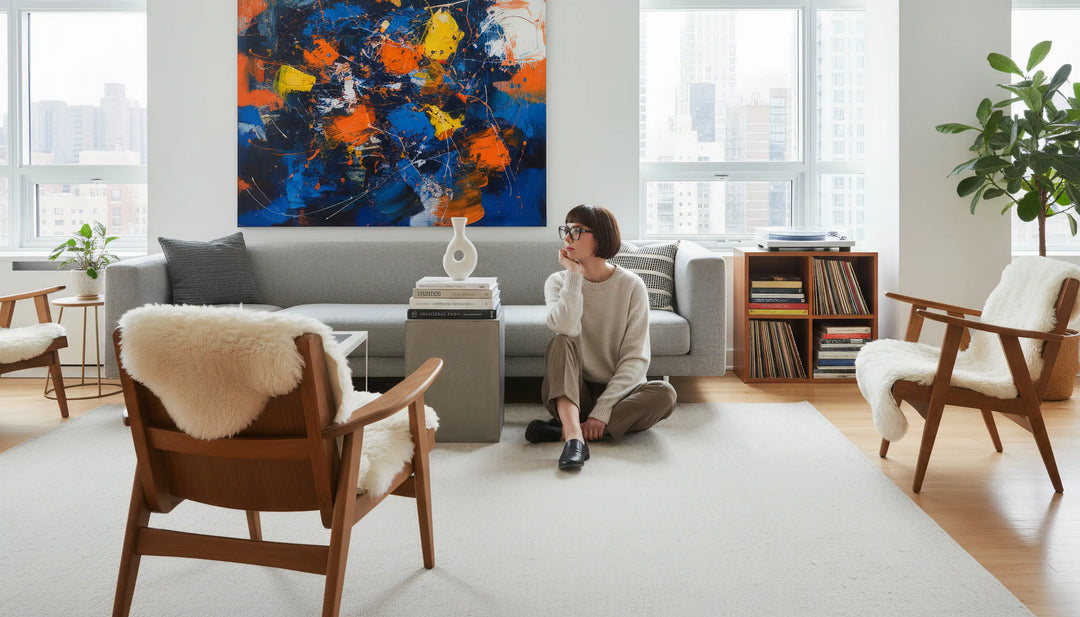Key Takeaways
- Geometric abstraction uses simple shapes and precise compositions to create powerful visual impact
- Understanding composition principles like the golden ratio helps identify quality pieces
- Different mediums offer unique opportunities for geometric expression
- Research shows geometric patterns trigger specific emotional and neurological responses
Contents
What is Geometric Abstraction?
Geometric Abstraction is a form of abstract art that uses simple, precise shapes and colors to create non-representational compositions. This influential style emerged in the early 20th century and continues to shape modern art and design today.

Fundamental geometric shapes: the building blocks of geometric abstraction
Understanding Geometric Abstraction
To better understand this fascinating art movement, watch this educational video that explores its core principles:
Key Characteristics of Geometric Abstraction
- Simplicity: Uses basic geometric shapes like circles, squares, triangles, and lines
- Precision: Employs clean, sharp edges and well-defined forms
- Non-representational: Avoids depicting recognizable objects or scenes
- Color focus: Often uses bold, flat colors or monochromatic schemes
- Balance and harmony: Creates visual interest through careful composition
How to Identify Quality Geometric Abstraction Art
Not all geometric abstract art is created equal. Understanding what makes a piece truly exceptional requires knowledge of composition principles, technical execution, and artistic intentionality.
Understanding Composition in Geometric Abstraction
The Golden Ratio in Geometric Layouts
The golden ratio (approximately 1:1.618) appears frequently in quality geometric compositions. Research shows that this mathematical proportion creates naturally pleasing arrangements that our brains find harmonious.

Color relationships and compositional balance in geometric abstraction
Color Temperature Relationships
Quality pieces demonstrate sophisticated understanding of color theory. Warm colors (reds, oranges, yellows) advance visually, while cool colors (blues, greens, purples) recede, creating depth even in flat compositions.
How Negative Space Affects Visual Impact
Master geometric abstractionists understand that negative space is as important as the shapes themselves. Look for pieces where the empty areas contribute meaningfully to the overall composition.
Reading the Artist's Intentionality Through Form Placement
Quality geometric abstraction isn't random. Each element should feel purposeful and contribute to the overall visual narrative or emotional impact.
The Psychology Behind Geometric Art Appeal
Recent neuroscience research reveals fascinating insights into why geometric abstraction has such powerful effects on viewers. Understanding these psychological mechanisms can deepen appreciation and guide selection.
How Different Shapes Trigger Emotional Responses
- Circles: Associated with comfort, unity, and wholeness. Research indicates that rounded shapes evoke positive feelings due to their link with happy, baby-like expressions.
- Triangles: Create tension, energy, and movement. Sharp angular shapes are often associated with alertness and dynamic action.
- Squares and Rectangles: Represent stability, trust, and order. Their balanced proportions suggest reliability and permanence.
- Lines: Vertical lines suggest strength and growth, horizontal lines imply calm and rest, while diagonal lines create movement and energy.
Geometric Abstraction in Different Mediums
Understanding how geometric abstraction manifests across different mediums helps collectors and enthusiasts appreciate the full scope of this artistic movement.
Traditional Painting
Oil and acrylic paintings remain the most recognized medium for geometric abstraction. The flat, precise application of paint emphasizes the purity of form and color that defines the movement.
Sculpture
Three-dimensional geometric abstraction explores how simple forms interact with space and light. Materials like steel, aluminum, and stone allow for dramatic exploration of geometric principles.

Different approaches to geometric abstraction: minimal, complex, and high-contrast styles
Digital Art
Computer-generated geometric abstraction offers unprecedented precision and the ability to explore complex mathematical relationships. Digital artists can create perfect geometric forms impossible to achieve by hand.
Textiles and Fabric Art
Quilts, tapestries, and fabric works bring geometric abstraction into functional art. The grid-based nature of weaving naturally lends itself to geometric exploration.
Explore Our Geometric Collections: Experience geometric abstraction across different mediums in our curated selections:
- Geometric Abstraction Art Prints - Classic and contemporary pieces
- Abstract Shapes & Pattern Prints - Exploring geometric relationships
- Hard Edge Abstract Art Prints - Precise geometric compositions
Beginner's Guide to Collecting Geometric Abstract Art
Starting a geometric abstraction collection requires understanding both aesthetic principles and market considerations. Here's your comprehensive guide to making informed purchases.
Price Ranges and Investment Considerations
Original Works
- Emerging Artists: R2,000 - R15,000 for small to medium works
- Established Artists: R15,000 - R100,000+ depending on size and reputation
- Historical Pieces: R100,000+ for authenticated works by movement pioneers
Limited Edition Prints
- Contemporary Artists: R500 - R5,000 for quality giclée prints
- Historical Reproductions: R1,000 - R8,000 for museum-quality reproductions
Authenticity Tips
- Request certificates of authenticity for original works
- Verify provenance through gallery documentation
- Research the artist's exhibition history and critical reception
- For prints, ensure they specify edition numbers and printing methods
Building a Cohesive Collection
Start with a focus: perhaps color palettes, specific geometric forms, or historical periods. A cohesive collection has more visual impact and potential investment value than random acquisitions.
How to Display Geometric Art in Your Home
Proper presentation can dramatically enhance the impact of geometric abstract art. Understanding lighting, spacing, and room dynamics ensures your pieces achieve maximum visual effect.

Perfect integration: geometric abstract art in a modern living space
Lighting Considerations
- Natural Light: Position pieces to avoid direct sunlight which can fade colors over time
- Artificial Lighting: Use LED track lighting or picture lights with adjustable angles
- Color Temperature: Choose warm white (3000K) for traditional pieces, neutral white (4000K) for contemporary works
Grouping and Spacing
- Gallery Wall: Maintain 5-8cm spacing between pieces for cohesive viewing
- Single Statement Piece: Allow 1.5-2 metres of clear wall space around large works
- Series Display: Present series pieces in chronological or size order for visual flow
Room-Specific Advice
Living Rooms
Choose pieces that complement your color scheme while providing visual interest. Larger geometric works can serve as focal points above sofas or fireplaces.
Bedrooms
Opt for calming geometric compositions with softer colors. Circular and flowing forms promote restfulness better than sharp, angular pieces.
Offices
Structured geometric pieces can enhance focus and productivity. Consider works with strong vertical elements to suggest growth and progress.
Expert Display Resources: For detailed guidance on art hanging and placement:
- Master the Art of Art Hanging - Complete hanging guide
- How to Light Up Wall Art - Professional lighting tips
- Framing Large Prints Guide - Presentation techniques
South African Geometric Artists to Watch
South Africa has a rich tradition of geometric abstraction that continues to evolve with contemporary artists bringing fresh perspectives to this timeless style.
Historical Context
South African geometric abstraction developed its own distinct character during the apartheid era, when abstract art provided a means of expression that transcended political boundaries. SMAC Gallery notes that abstraction holds "a special place in the canon of South African art."
Contemporary Artists Making Waves
Esther Mahlangu
While primarily known for traditional Ndebele art, Mahlangu's work bridges traditional geometric patterns with contemporary abstract expression, creating a unique South African voice in geometric art.
Sibusiso Ngwazi
This contemporary artist explores non-figurative abstraction with a distinctly African perspective, bringing geometric principles into dialogue with cultural identity.
Emerging Voices
New generation South African artists are reimagining geometric abstraction through digital mediums and mixed media, creating works that speak to both global artistic movements and local cultural experiences.
The Evolution of Geometric Abstraction

The evolution of geometric abstraction through the 20th century
Geometric Abstraction has its roots in early 20th-century movements like Cubism, De Stijl, and Constructivism. Artists like Kazimir Malevich, Piet Mondrian, and Wassily Kandinsky were pioneers in using geometric forms to express abstract ideas and emotions.
Over time, Geometric Abstraction has influenced various art movements and design fields:
- Op Art: Creating optical illusions through precise geometric patterns
- Minimalism: Reducing art to its most essential elements
- Digital Art: Utilizing computer-generated geometric forms
- Graphic Design: Incorporating geometric shapes in logos and layouts
- Architecture: Influencing building designs with clean lines and simple shapes
Contemporary Geometric Abstraction
Today, Geometric Abstraction continues to evolve and inspire artists and designers. Let's explore some contemporary examples that showcase the enduring appeal of this style:
🎨 Style Quiz: Which Geometric Abstract Style Matches Your Personality?
Discover your ideal geometric art style by considering these preferences:
Your Living Space:
- Minimalist & Clean: → Simple Geometric Forms
- Bold & Dramatic: → Hard Edge Abstractions
- Warm & Inviting: → Organic Geometric Patterns
Frequently Asked Questions
What's the difference between geometric abstraction and other abstract styles?
Geometric abstraction specifically uses mathematical forms and precise shapes, while other abstract styles like Abstract Expressionism focus on gestural, emotional expression without geometric constraints.
How do I know if a geometric abstract piece is well-composed?
Look for balanced proportions, purposeful color relationships, and compositional elements that follow principles like the golden ratio. Quality pieces feel intentional rather than random.
Can geometric abstract art work in traditional home decor?
Absolutely! Choose pieces with colors that complement your existing palette, and consider frames that bridge modern and traditional aesthetics. Geometric art can add contemporary sophistication to any style.
What should I expect to pay for quality geometric abstract art?
Prices vary dramatically: high-quality prints start around R500-2,000, emerging artist originals range from R2,000-15,000, while established artists and historical pieces can command R15,000-100,000+.
Quick Reference Guide
📅 Movement Period
1910s - Present
🎨 Key Characteristics
- Simple geometric forms
- Precise, clean edges
- Non-representational
- Mathematical relationships
👥 Major Artists
- Piet Mondrian
- Kazimir Malevich
- Wassily Kandinsky
- Josef Albers
🏛️ Famous Collections
- MoMA, New York
- Tate Modern, London
- Guggenheim Museums
- Centre Pompidou, Paris
The Enduring Appeal of Geometric Abstraction
Geometric Abstraction continues to captivate audiences for several compelling reasons:
- Versatility: It can be adapted to various styles, from minimalist to complex compositions
- Timelessness: The clean, simple forms have an enduring aesthetic appeal that transcends trends
- Emotional impact: Despite its simplicity, it can evoke strong emotions through color and composition
- Intellectual engagement: It invites viewers to interpret and find meaning in abstract forms
- Universal language: Geometric forms speak across cultural boundaries
- Decorative potential: Geometric abstract art complements a wide range of interior design styles
Whether you're drawn to the mathematical precision of Mondrian's grids, the spiritual geometry of Kandinsky's compositions, or the bold simplicity of contemporary minimal forms, Geometric Abstraction offers a rich visual language that continues to evolve and inspire.
By incorporating these artworks into your space, you're not just decorating—you're engaging with a significant movement in art history that has shaped our understanding of form, color, and visual communication. The principles explored in geometric abstraction continue to influence everything from digital design to architecture, making it as relevant today as it was a century ago.
Explore Our Complete Geometric Collection: Ready to discover the perfect geometric abstraction for your space?
- Complete Geometric Abstraction Collection - Curated selections from classic to contemporary
- Abstract Wall Art Prints - Broader abstract art exploration
- Contemporary Wall Art Prints - Modern geometric expressions
Geometric Abstraction Glossary
Hard Edge: A style of geometric abstraction featuring sharp, clean boundaries between color areas
Suprematism: Russian art movement founded by Malevich emphasizing basic geometric forms
De Stijl: Dutch artistic movement advocating pure abstraction through horizontal and vertical lines
Color Field: Large areas of flat, solid color used to create visual impact
Constructivism: Russian avant-garde movement using geometric forms for social purposes

Nikki Sandeman
Art Lover & Décor Specialist
15-year journey renovating homes and styling living spaces with unique wall art and custom prints. Helping readers integrate art and décor into modern interiors. Learn more →





